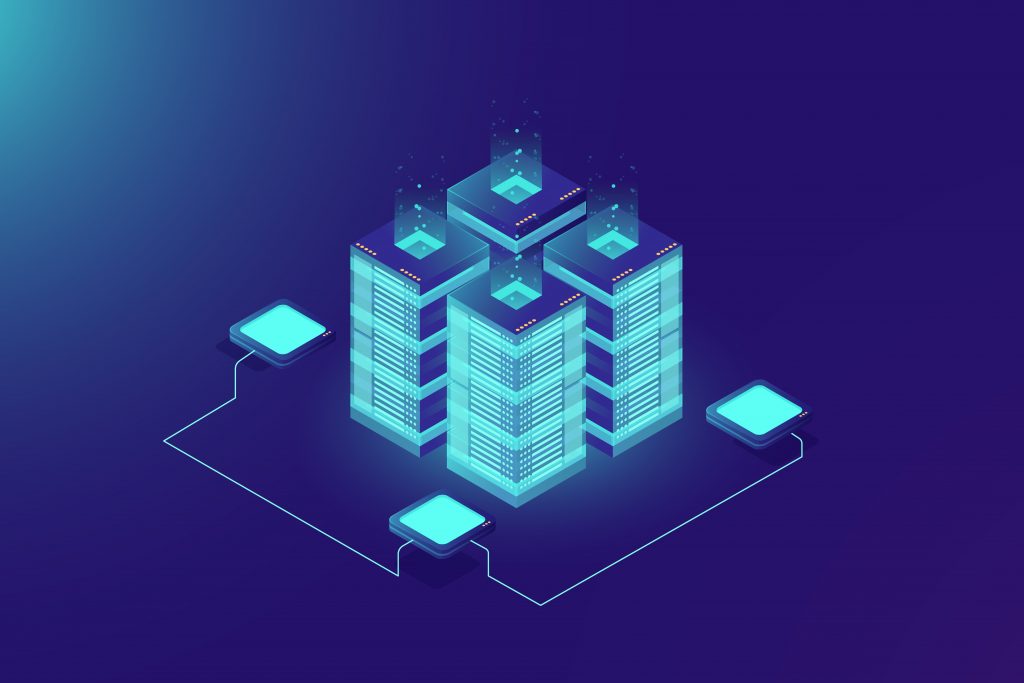Our global financial system, long dominated by government-issued fiat currency, is shifting to include digital currencies. Visa recently reported that more than $1B was spent on crypto-linked Visa cards in the first half of 2021. Morgan Stanley now offers wealth management clients Bitcoin exposure and JP Morgan recently became the first big bank to give retail clients access to Bitcoin investment vehicles.
However, the reasons why conducting transactions with digital currencies is so worthwhile may not be clear to many banking institutions and their customers.
Blockchain, or the platform where digital currency transactions are recorded and stored, is a big part of the appeal. Blockchain securely records and validates each transaction. This makes it uniquely suited to making direct payments, slashing fraud, lending and auditing. By putting dollars and other assets onto a blockchain, you add a layer of security and trust that cannot be replicated by traditional banking infrastructure and remove complexity and cost.
Financial institutions have spent more than $550M on blockchain-powered projects. However, with more than $700 trillion worth of assets in the world, this trend is just beginning. Here are a few examples of the benefits banks and their customers reap from adopting blockchain technology.
Payments
Current Reality: Payments of all forms typically take up to a week to clear. This includes payments to individuals, organizations, credit card companies, and cross-border payments. Funds flow through multiple financial intermediaries, including banks, credit card processors, or currency exchangers. These third-parties review, validate and authorize the payments. This system is cumbersome. It results in increased costs that often fall back on banks, merchants or customers.
Blockchain Reality: Blockchain is a shared, immutable ledger that provides a chronological history of transactions that connects peers, banks and companies that are domestic or overseas. It’s just about impossible to manipulate transactions or to add information that hasn’t been verified. That means payments can move twenty-four hours a day, seven days a week. They can also be settled almost instantly via smart contracts, or pieces of programmed code stored on a blockchain. Anyone can make or receive a payment as long as they’re on that blockchain.
Fraud
Current Reality: Financial transactions open opportunities for fraud. Time needed to settle payments, collateral requirements, currency differences and third-party review are just some of the vectors for fraud to occur. Bank-to-bank transactions are just as vulnerable to attacks, with banks losing an estimated $20 billion annually to fraudsters.
Blockchain Reality: Cyber-attacks and fraud are reduced by design. Transactions can only be initiated or changed by users with consent. At each stage of a transaction, permanent, time-stamped records are built and stored. Each person within the network receives a copy of the transaction in real-time. This makes fraudulent transactions easy to recognize and flag.
Lending
Current Reality: Making a loan available to an individual typically takes about three weeks. Lenders require third-party background checks, including a current credit score, to determine whether they want to enter into a loan agreement. This means time, manpower and money.
Blockchain Reality: Smart contracts enable lenders to validate transactions, confirm the legitimacy of borrowers and perform routine account maintenance. Such maintenance could be imposing late payment fees on borrowers who do not pay. Blockchain also eliminates geographic constraints, with lenders from any location bidding to provide loans to any borrower requesting them.
Accounting and auditing
Current Reality: Managing all forms of banking and investment accounts and maintaining records of transactions means paperwork. Digitizing that paperwork securely is onerous. Banks need to meet regulatory standards to verify the authenticity of electronic files.
Blockchain Reality: An automated record of account activity essentially enables real-time auditing. This is accessible whenever an institution is being investigated or needs to quickly produce records. The quick availability of information reduces time and stress involved in auditing procedures. Banks may even allow auditors and government officials to access the blockchain.
As with any innovation, the process of disrupting the way business gets done seems daunting. However, as finance grows increasingly automated and digitized, the dynamic security, savings and efficiency benefits blockchain offers make it an increasingly strategic choice for banks and their customers.
